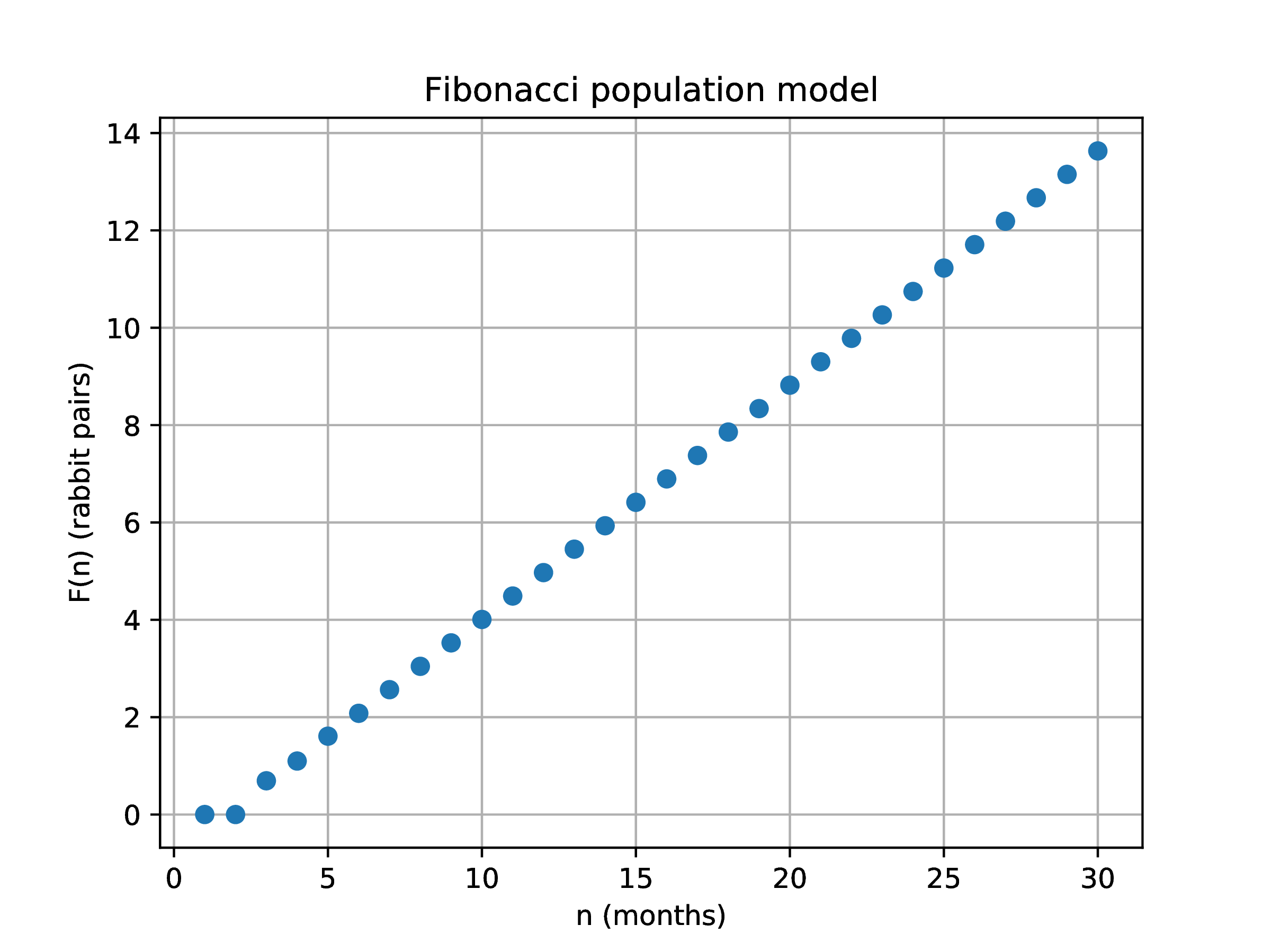| MATH089 Project 1 - Population
models |
|
Posted: 08/24/21
Due: 09/03/21, 11:55PM
1Difference equations
1.1Mathematics of difference equations
1.2Fibonacci population model
In 1202 Fibonacci introduced a model of population growth based on
discrete time reproduction with death or infertility.
1.2.1Hypotheses
The formal assumptions within the Fibonacci popoulation model are:
-
Count rabbit pairs, denote by one
male and one female;
-
Assume rabbit pairs do not die;
-
Assume each pair reproduces in a constant time interval of one
month;
-
Assume one unit of time from birth to fertility;
-
Assume each rabbit pair reproduces exactly one new rabbit pair;
-
Assume all rabits pairs are fertile.
Denote time by ,
and let denote the
number of pairs at time .
1.2.2Mathematical formulation
The Fibonacci model leads to the relation
with initial conditions ,
.
The model exhibits exponential growth as shown in Fig. 1
∴ |
function F(n)
if ((typeof(n)==Int64) && (n>=0))
if (n<2)
return n
end
return F(n-1)+F(n-2)
else
print("Invalid argument\n")
end
end |
 |
|
Figure 1. Logarithmic
representation of Fibonacci rabbit pair growth.
|
∴ |
N=30; n=0:N; Fn=F.(n); clf(); plot(n,log.(Fn),"o"); |
∴ |
xlabel("n (months)"); ylabel("F(n) (rabbit pairs)"); |
∴ |
title("Fibonacci population model"); grid("on"); |
∴ |
savefig(homedir() * "/courses/MATH089/images/Fibonacci.eps") |
1.3Malthus population model
A different population model is given
∴ |
function P(n,r)
if ((typeof(n)==Int64) && (n>=0) && (r>-1))
if (n==0)
return 1
end
return (1+r)*P(n-1,r)
else
print("Invalid argument\n")
end
end |
∴ |
N=30; n=0:N; r=1; Pn=P.(n,r); plot(n,log.(Pn),"o"); |
∴ |
xlabel("n (months)"); ylabel("P(n)"); |
∴ |
title("Malthus population model"); grid("on"); |
∴ |
savefig(homedir() * "/courses/MATH089/images/Malthus.eps") |
1.4Logistic population model
2Systems of difference equations
2.1Predator-prey models
2.2Resource-Gatherer-Prey models
2.3Susceptible-Infectious-Recovered disease
propagation models
3Differential equations
3.1Limits of difference equations
3.2Correspondence principle

